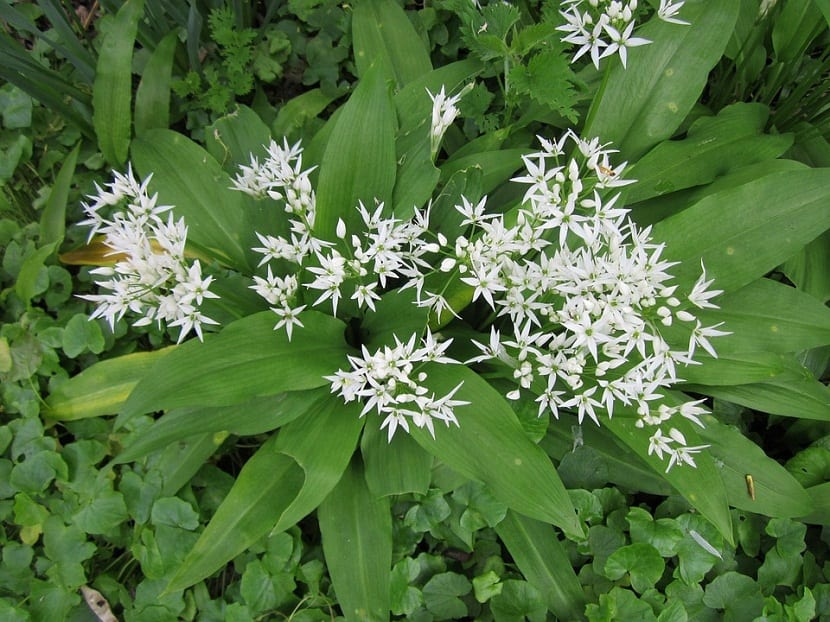
The Allium ursinum or also called bear's garlic, it is a small native garlic, a bulbous plant belonging to the Liliaceae family. Known for its medicinal properties and especially as a food and condiment, wild garlic, widely distributed in Europe and North Asia, is harvested each year by connoisseurs.
The Allium ursinum also can be an excellent cultivated plant, both decorative and food.
Description of Allium ursinum or bear's garlic

This description is important to avoid confusing wild garlic with other plants at harvest time.
Allium ursinum It is a tall plant of 30 to 45 cm. and that has a narrow and elongated bulb, 1 cm thick and 3 to 4 cm high, protected by a single scale.
This deeply buried bulb usually develops three long petiolate leaves that appear to emerge from the ground independently of each other. Its petiole is flat on one side and rounded on the other, it has two angles and its blade is oval, lanceolate, flat and quite soft to the touch.
This plant has a strong, fragrant smell. Allium ursinum generally forms colonies.
Flowers they bloom in May and June on a rigid stem with two projection angles. An umbel of approximately 5-6 cm contains 10 to 20 small, star-shaped white flowers.
A cluster of wild garlic forms a light and interesting bloom. The flowers are visited by insects, then they bear fruit in many seeds that are scattered by ants.
Vegetative cycle of Allium ursinum
The leaves fall to the ground in early January, bloom in May, bear fruit in June-July, then go to rest and disappear completely, restarting its development from the roots as of September.
For the unsuspecting, the leaves of the Allium ursinum can be confused with those of the lily of the valley, both in the garden and in the forest, because it likes the same living conditions. Lily of the valley is a very toxic plant and to harvest it safely, the leaves of the Allium ursinum are collected, one by one, touching the petiole to the level where it comes out of the ground.
How to grow Allium ursinum?
Allium ursinum grows naturally in shady areas more or less deeply, in neutral to very basic soils. It characterizes a medium that remains cool, both at the level of the earth and in the atmosphere, and rich in nitrogen.
However, it is tolerant and is easily grown in the garden. If the freshness is insufficient, the sunnier exposure will be smaller and less vigorous, but it will adapt.
If the conditions are met, it grows rapidly and multiplies by division and spontaneous seeding.
It is planted or transplanted in July and August, when the bulbs are dormant. Green plants, sold in pots in the spring, will settle into the ground without disturbing their roots.
Use of Allium ursinum

The whole plant is edible, leaves have a sweet, delicate garlic flavor, which is more interesting since this fresh garlic is available at the end of winter. The flowers, seed pods, and bulbs are hotter.
Wild garlic It is purifying, antiparasitic and it has many other medicinal properties, very similar to cultivated garlic.
A simple recipe that can be made with Allium ursinum is to place it in a large bowl, put white cow or goat cheese, with three finely chopped bear garlic leaves, salt and pepper, mix well, this is a treat.
Wild garlic is rich in vitamins C, contains magnesium, iron, purifies the blood, facilitates digestion, reduces blood pressure and prevents arteriosclerosis, it is deworming and purifying, so to speak, being a beneficial plant for health.
Allium ursinum species and varieties
We can say that this genus includes more than 700 different species.